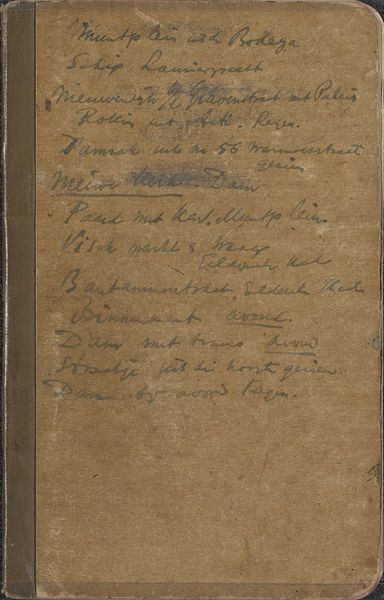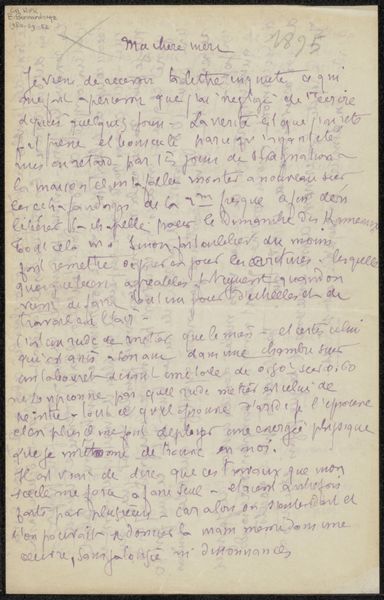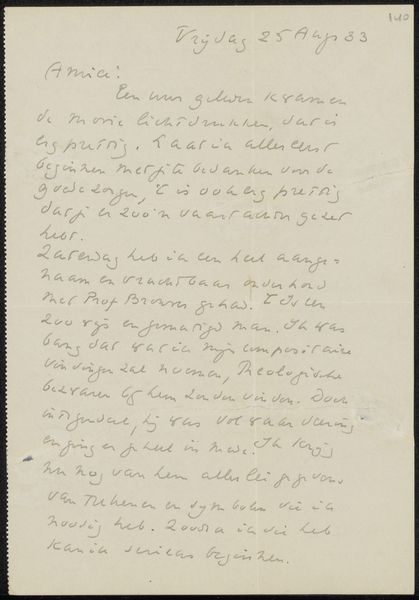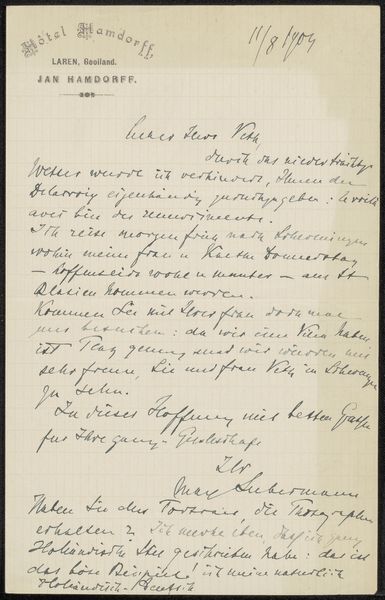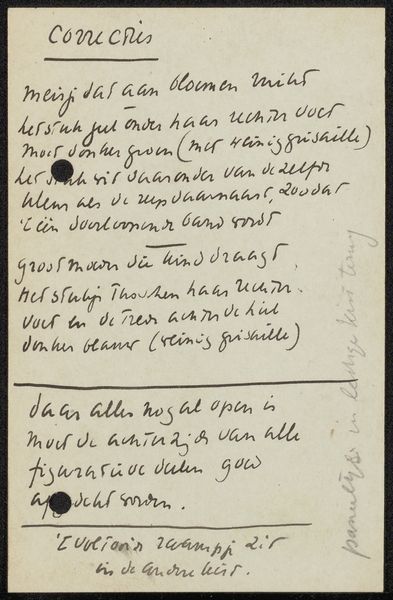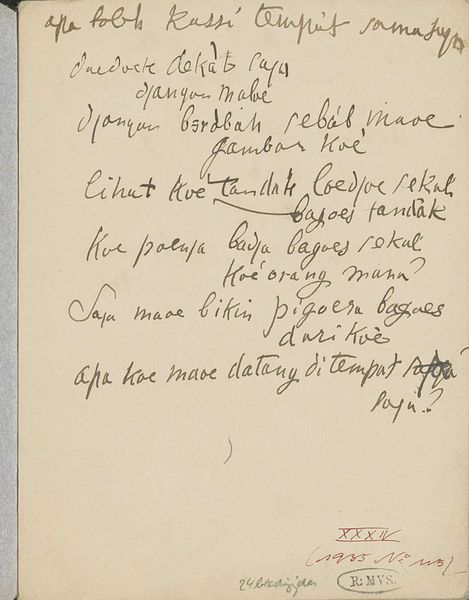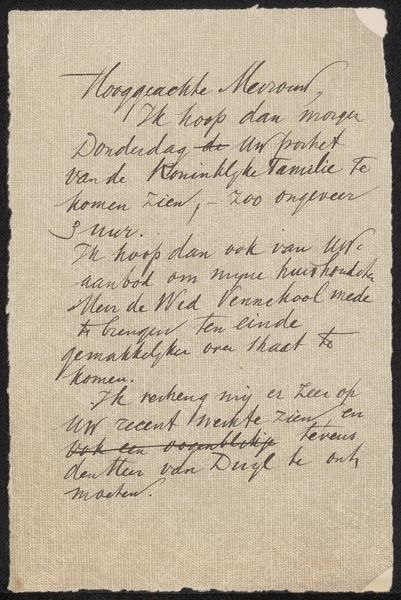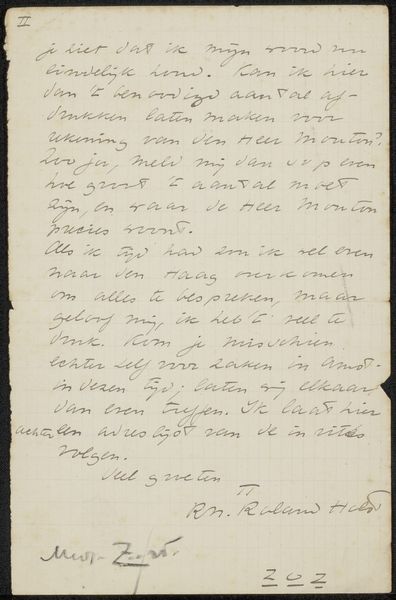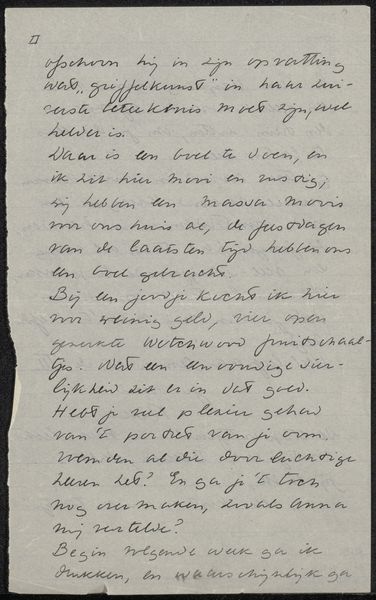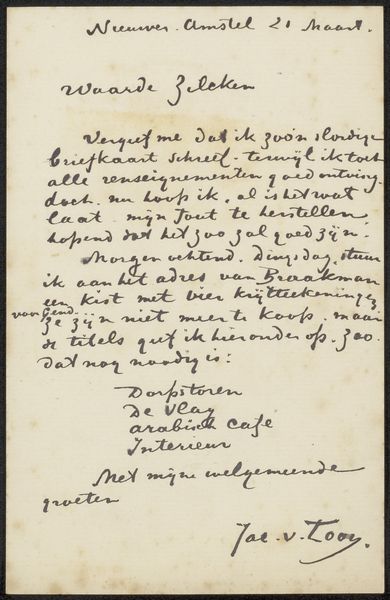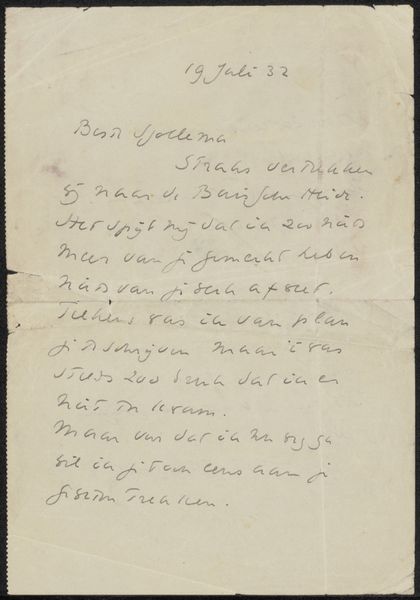
drawing, paper, ink, pencil, graphite
#
portrait
#
drawing
#
aged paper
#
hand written
#
hand-lettering
#
dutch-golden-age
#
hand drawn type
#
hand lettering
#
paper
#
personal sketchbook
#
ink
#
hand-written
#
fading type
#
pencil
#
graphite
#
sketchbook art
#
calligraphy
Copyright: Rijks Museum: Open Domain
Curator: This piece, "Notities" by Johannes Tavenraat, created between 1854 and 1868, is an unassuming drawing, using pencil, graphite and ink on paper, held at the Rijksmuseum. Editor: It looks like a page torn from a personal sketchbook. The aged paper and faded handwriting give it an intimate, almost fragile quality. What strikes you about this work? Curator: I am immediately drawn to the materiality of this object. Consider the labour involved – Tavenraat's hand meticulously forming each letter, the pressure of the pencil leaving its trace on the paper. What does this suggest about the cultural value placed on the handwritten word versus printed matter during this era? Editor: It speaks to a different pace, doesn't it? Today, we might type these notes. Curator: Precisely! Now look closer, what words are repeated, or stand out in size and order? It’s easy to dismiss these notes as casual scribbles, but that’s only the surface. There’s clearly attention paid to words such as repairs, rental, land, with some accounting on the lower half. We need to consider this document as a result of commerce and consider that the process of making and receiving are vital aspects of interpretation here. Editor: So, are you saying this isn’t high art but a record of everyday life, elevating those economic interactions? Curator: I propose it's both! By paying attention to the material reality – the cheap paper, the graphite, the seemingly mundane content – we question what we value and display. This wasn't necessarily meant to be art, but we, by examining it today, must recognize the artistic and historical value in Tavenraat's efforts to create art from every day processes. It asks us about value systems of then and now, right? Editor: I see what you mean. Examining it through the lens of labour and material really makes me consider its social context in a new light. It bridges the gap between high art and the seemingly mundane realities of the time. Thanks! Curator: Indeed, it reveals how even simple notes speak volumes about material practices, and forces of exchange of a given era.
Comments
No comments
Be the first to comment and join the conversation on the ultimate creative platform.

